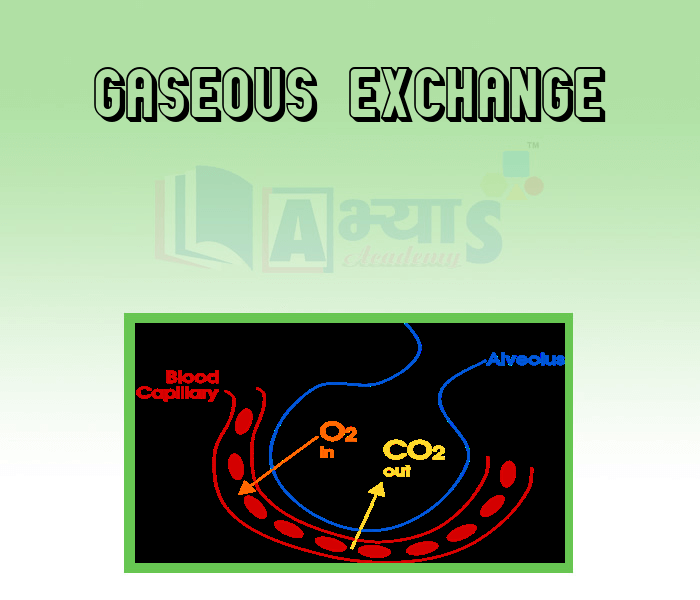Gaseous Exchange











Gaseous Exchange
Gaseous Exchange in Unicellular Organism
In unicellular organisms, simple diffusion through body surface is sufficient for exchange of gases necessary for respiration because the cell is in continuous contact with the external environment. This exchange occur based on the partial pressure of the gas with in the body and the surrounding. If the partial pressure of the gas is more in the body then it will diffuse out of the body and vice versa.
Gaseous Exchange in Multicellular Organism: In simple multicellular organisms like poriferans and coelenterates, respiration occurs by simple diffusion because most of their cells are in contact with external environment. But in complex multicellular organisms a respiratory system is needed for effective gas exchange because all cells are not in direct contact with external environment.
Gaseous Exchange in Humans :
In case of humans a special system called as respiratory system is required for the exchange of gases.The system consisist of lungs and trachea. We breath in atmospheric air during inhalation. The partial pressure of oxygen is more in the air inhaled. After reaching the lungs this air get transported to the blood through alveoli. In the same way when the partial pressure of carbon dioxide gas is more in the cells, than it will diffuse out into the blood flowing in the blood capillaries surrounding the cell. Blood then transfer carbon dioxide to the lungs for exhalation.
Which of the following are correct ? (a) In unicellular organisms, simple diffusion through body surface is sufficient for exchange of gases necessary for respiration because the cell is in continuous contact with the external environment. (b) In simple multicellular organisms like poriferans and coelenterates, respiration occurs by simple diffusion because most of their cells are in contact with internal environment. (c) Humans a special system called as respiratory system is required for the exchange of gases. | |||
| Right Option : C | |||
| View Explanation | |||
Gasecous exchange in plants occurs through ____________and____________. | |||
| Right Option : B | |||
| View Explanation | |||
Gaseous exchange in plants take place through ________ and ___________ . | |||
| Right Option : A | |||
| View Explanation |
Students / Parents Reviews [10]
One of the best institutes to develope a child interest in studies.Provides SST and English knowledge also unlike other institutes. Teachers are co operative and friendly online tests andPPT develope practical knowledge also.

Aman Kumar Shrivastava
10thMy experience with Abhyas academy is very good. I did not think that my every subject coming here will be so strong. The main thing is that the online tests had made me learn here more things.

Hiya Gupta
8thIt was a good experience with Abhyas Academy. I even faced problems in starting but slowly and steadily overcomed. Especially reasoning classes helped me a lot.

Cheshta
10thI have spent a wonderful time in Abhyas academy. It has made my reasoning more apt, English more stronger and Maths an interesting subject for me. It has given me a habbit of self studying

Yatharthi Sharma
10thAbhyas is a complete education Institute. Here extreme care is taken by teacher with the help of regular exam. Extra classes also conducted by the institute, if the student is weak.

Om Umang
10thAbhyas Methodology is very good. It is based on according to student and each child manages accordingly to its properly. Methodology has improved the abilities of students to shine them in future.

Manish Kumar
10thAbout Abhyas metholodology the teachers are very nice and hardworking toward students.The Centre Head Mrs Anu Sethi is also a brilliant teacher.Abhyas has taught me how to overcome problems and has always taken my doubts and suppoeted me.

Shreya Shrivastava
8thIt was good as the experience because as we had come here we had been improved in a such envirnment created here.Extra is taught which is beneficial for future.

Eshan Arora
8thA marvelous experience with Abhyas. I am glad to share that my ward has achieved more than enough at the Ambala ABHYAS centre. Years have passed on and more and more he has gained. May the centre flourish and develop day by day by the grace of God.

Archit Segal
7thBeing a parent, I saw my daughter improvement in her studies by seeing a good result in all day to day compititive exam TMO, NSO, IEO etc and as well as studies. I have got a fruitful result from my daughter.
